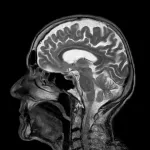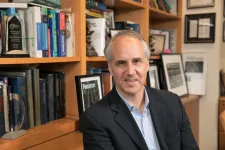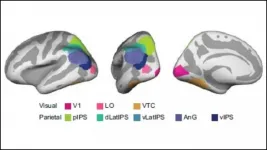Stroke of luck: Scientists discover target for stroke therapy in blood-brain barrier
New study shows that stroke byproduct acrolein activates the precursor of heparanase, an enzyme that degrades the glycocalyx in the blood-brain barrier
2021-02-22
(Press-News.org) Strokes are a leading cause of poor quality of life or even death in Japan and the world over. Since its characterization, several researchers have been working tooth and nail to identify drug-accessible and effective therapeutic targets for this debilitating condition. One such region of interest for drug targets is the blood-brain barrier (BBB).
The BBB is a structure located around the brain, which prevents the entry of unnecessary circulating cells and biomolecules into the brain. The blood vessels in the BBB are coated with a distinct and protective layer of sugar, called the endothelial glycocalyx, which prevents their entry. However, in the event of a stroke, which results in the blockage or severance of blood vessels in the brain, studies have shown that this glycocalyx and, in turn, the integrity of the BBB, get compromised. In addition, damage to the blood vessels leads to neuronal death and the build-up of toxic byproducts like acrolein.
A group of researchers from Japan and the United States wanted to explore how the degradation of the glycocalyx takes place during an ischemic stroke. Junior Associate Professor Kyohei Higashi from Tokyo University of Science, one of the researchers, explains the motivation behind the research, "When brain tissue becomes necrotic due to ischemia, the function of the BBB is disrupted and immune cells infiltrate the brain, exacerbating inflammation, but the details of this process are still unclear." For the first time, as detailed by the study published in Journal of Biological Chemistry, the group of scientists, led by Dr. Higashi, have identified a possible mechanism that links acrolein accumulation to glycocalyx modifications, which results in damage to the BBB. The team, also comprising Naoshi Dohmae and Takehiro Suzuki from RIKEN Center for Sustainable Resource Science, Toshihiko Toida from Chiba University, Kazuei Igarashi from Amine Pharma Research Institute, Robert J. Linhardt from Rensselaer Polytechnic Institute, and Tomomi Furihata from Tokyo University of Pharmacy and Life Sciences, used mouse models of stroke as well as in vitro ("in the lab") experiments using cerebral capillary endothelial cells to accurately study the mechanisms behind the breakdown of the BBB.
The researchers initially identified that the major sugars in the glycocalyx, heparan sulphate and chondroitin sulfate, showed decreased levels in the 'hyperacute phase' after a stroke. They also found the increased activity of glycocalyx-degrading enzymes like hyaluronidase 1 and heparanase. Upon further in vitro investigation using cell lines, they found that acrolein exposure led to the activation of the precursor of heparanase (proHPSE). Specifically, they found that the acrolein modified specific amino acids on the structure of proHPSE, activating it. They concluded that this mechanism possibly led to the degradation of the glycocalyx, and the subsequent disruption of the BBB.
The team's discovery is critical, as the acrolein-modified proHPSE could be a novel and potentially effective drug target for post-stroke inflammation. As Dr. Higashi, who is also the corresponding author of the study, speculates, "Because proHPSE, but not HPSE, localizes outside cells by binding with heparan sulfate proteoglycans, acrolein-modified proHPSE represents a promising target to protect the endothelial glycocalyx."
Indeed, we hope that the further investigation of this mechanism would lead us to therapies that are more effective in tackling stroke-related illnesses!
INFORMATION:
About The Tokyo University of Science
Tokyo University of Science (TUS) is a well-known and respected university, and the largest science-specialized private research university in Japan, with four campuses in central Tokyo and its suburbs and in Hokkaido. Established in 1881, the university has continually contributed to Japan's development in science through inculcating the love for science in researchers, technicians, and educators.
With a mission of "Creating science and technology for the harmonious development of nature, human beings, and society", TUS has undertaken a wide range of research from basic to applied science. TUS has embraced a multidisciplinary approach to research and undertaken intensive study in some of today's most vital fields. TUS is a meritocracy where the best in science is recognized and nurtured. It is the only private university in Japan that has produced a Nobel Prize winner and the only private university in Asia to produce Nobel Prize winners within the natural sciences field.
Website: https://www.tus.ac.jp/en/mediarelations/
About Dr. Kyohei Higashi
Dr. Kyohei Higashi is a Junior Associate Professor at Tokyo University of Science, Japan. His areas of research interest include the physiological function of polyamines, acute cerebral infarction, and structures of glycosaminoglycans derived from biological samples.
Funding information
This study was supported by a Grant-in-Aid for Scientific Research (C) (15K08068) from the Japan Society for the Promotion of Science, the Research Foundation for Pharmaceutical Sciences, and the Chiba Foundation for Health Promotion and Disease prevention, to Junior Associate Professor Kyohei Higashi. In addition, this study was supported by the Smoking Research Foundation, to Professor Toshihiko Toida.
[Attachments] See images for this press release:

ELSE PRESS RELEASES FROM THIS DATE:
2021-02-22
Skoltech researchers have designed a software-based algorithm for synchronizing time across smartphones that can be used in practical tasks requiring simultaneous measurements. This algorithm can essentially help turn several devices into a full-fledged network of sensors. The paper was published in the journal Sensors.
If you want a network of intelligent devices - say, an array of cameras capturing a dynamic scene or another kind of network of sensors - to work properly, one of the fundamental tasks you have to solve is clock synchronization: all devices should have the same timeline, often up to sub-millisecond for the more challenging tasks. Modern smartphones can easily be used as multipurpose ...
2021-02-22
Female physicians have better patient outcomes compared with their male peers, while female patients are less likely to receive guideline-recommended care when treated by a male physician, according to a systematic review from the American College of Cardiology's Cardiovascular Disease in Women section published today in the Journal of the American College of Cardiology.
While women make up over 50% of internal medicine residents, only 12.6% of cardiologists are female. A dedicated effort to increase diversity in the cardiovascular field could help to lower implicit bias, often considered an important factor in health care disparities.
In a detailed systematic review, researchers looked at 13 studies ...
2021-02-22
A new study from UCLA and Stanford University researchers finds that three-dimensional human stem cell-derived organoids can mature in a manner that is strikingly similar to human brain development.
For the new study, published in Nature Neuroscience February 22, senior authors Dr. Daniel Geschwind of UCLA and Dr. Sergiu Pasca of Stanford University conducted extensive genetic analysis of organoids that had been grown for up to 20 months in a lab dish. They found that these 3D organoids follow an internal clock that guides their maturation in sync with the timeline of human development.
"This is novel -- Until now, nobody has grown and characterized these organoids for this amount ...
2021-02-22
A trio of recent studies highlight the need to incorporate behavioral and social science alongside the study of biological mechanisms in order to slow aging.
The three papers, published in concert in Ageing Research Reviews, emphasized how behavioral and social factors are intrinsic to aging. This means they are causal drivers of biological aging. In fact, the influence of behavioral and social factors on how fast people age are large and meaningful. However, geroscience--the study of how to slow biological aging to extend healthspan and longevity--has traditionally not incorporated ...
2021-02-22
Reno, Nev. (Feb. 22, 2021)- Normally, we think of the freezing point of water as 32°F - but in the world of weather forecasting and hydrologic prediction, that isn't always the case. In the Lake Tahoe region of the Sierra Nevada, the shift from snow to rain during winter storms may actually occur at temperatures closer to 39.5°F, according to new research from the Desert Research Institute (DRI), Lynker Technologies, and citizen scientists from the Tahoe Rain or Snow project
The new paper, which published this month in Frontiers in Earth Science, used data collected by 200 volunteer weather spotters to identify the temperature cutoff between rain and snow in winter storms that occurred during the ...
2021-02-22
Long before COVID-19 entered the picture, West Virginia had been battling two other major public health crises: opioids and HIV.
Dr. Sally Hodder, a leading infectious disease expert at West Virginia University, believes that despite the threat of COVID-19, the opioid and HIV epidemics should not be ignored. The two have become so intertwined in the Mountain State, that they must be treated together, she said.
"We cannot try to solve the opioid epidemic or our emerging HIV epidemic by combating them separately," said Hodder, who serves as director of the West Virginia Clinical and Translational Science Institute and associate vice president ...
2021-02-22
In order to remember similar events, the brain exaggerates the difference between them. This results in divergent brain activity patterns but better memory performance, according to new research published in JNeurosci.
Memory is subjective. Different people recall the same event in unique ways, and people exaggerate the difference between similar events in their own life. Yet this type of bias can be advantageous when it helps the brain distinguish between similar things and prevent confusion.
In a study by Zhao et al., participants memorized different sets of faces paired with colored objects. Some ...
2021-02-22
The cover for issue 46 of Oncotarget features Figure 6, "Establishment of a SARS-CoV-2 pseudovirus that expresses SPIKE protein variants on the envelope of a lentiviral core, infection of human airway epithelial cells or lung cancer cells, and demonstration of MEKi attenuation of infectivity on primary human cells," published in "MEK inhibitors reduce cellular expression of ACE2, pERK, pRb while stimulating NK-mediated cytotoxicity and attenuating inflammatory cytokines relevant to SARS-CoV-2 infection" by Zhou, et al. which reported that Natural Killer cells and innate-immune TRAIL ...
2021-02-22
Walk along the beach after a winter storm and you'll see a shore littered with wracks of giant kelp, some 30 to 40 feet long -- evidence of the storm's impact on coastal kelp forests.
Less apparent to the casual beachgoer is what happens to the submarine forests after the storm's fury dies down. This is precisely the topic of a new study led by Raine Detmer(link is external), a graduate student at UC Santa Barbara. She developed a mathematical model describing the effects of severe storms on kelp forest ecosystems, particularly the seafloor, or benthic, communities. The research, published in Ecology (link is external), reveals an ecosystem whose variability is key to its diversity.
Giant kelp ...
2021-02-22
Graphs -- data structures that show the relationship among objects -- are highly versatile. It's easy to imagine a graph depicting a social media network's web of connections. But graphs are also used in programs as diverse as content recommendation (what to watch next on Netflix?) and navigation (what's the quickest route to the beach?). As Ajay Brahmakshatriya summarizes: "graphs are basically everywhere."
Brahmakshatriya has developed software to more efficiently run graph applications on a wider range of computer hardware. The software extends GraphIt, a state-of-the-art graph programming language, to ...
LAST 30 PRESS RELEASES:
[Press-News.org] Stroke of luck: Scientists discover target for stroke therapy in blood-brain barrier
New study shows that stroke byproduct acrolein activates the precursor of heparanase, an enzyme that degrades the glycocalyx in the blood-brain barrier






